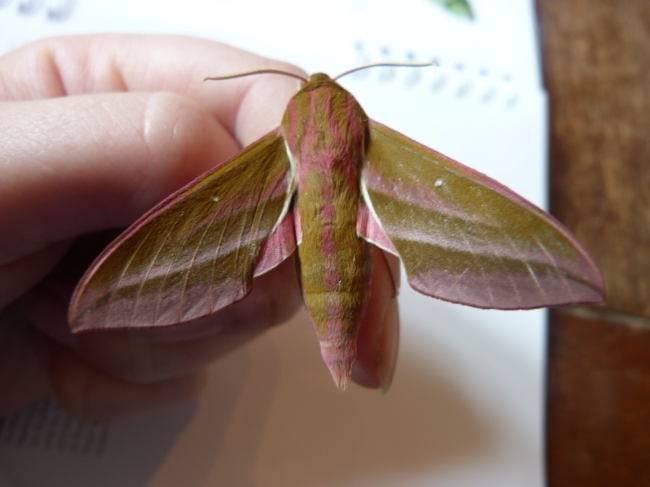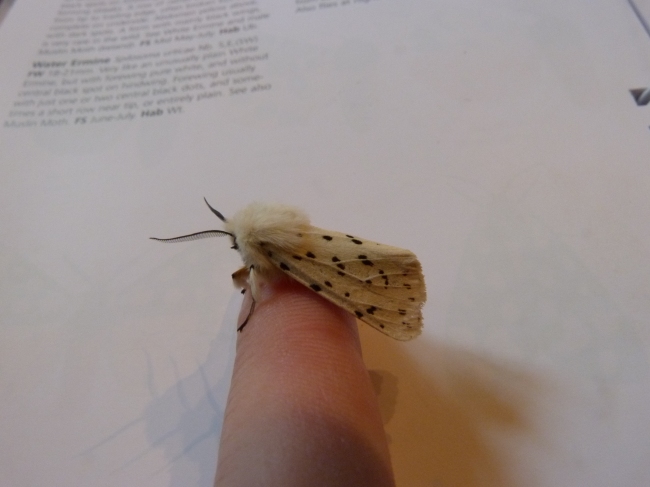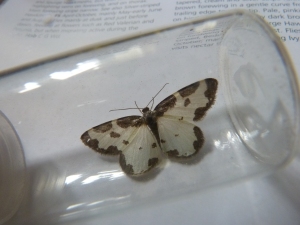Moth Solo – A new adventure, the battery strikes back and return of the ermine.
I was first introduced to moth trapping in 2012 during my placement year with the Field Studies Council at Margam Discovery Centre (South Wales) when one of the tutors fixed the moth trap there and set it out. The species that sticks most in my mind was the Drinker moth, I was particularly impressed by its antennae. This year I took a short course in invertebrates, as one of a number of extra-curricular ecology modules that I took alongside my third year at university. It was run by Dr. Phil Ward – an expert on invertebrates and a county recorder in Radnorshire. He introduced different types of moth traps, and over two nights we caught a variety of different moths – including a gorgeous Poplar Hawkmoth (L.populi).
A weekend in mid-June provided a good opportunity. I had the time, the need and the space. I was house-sitting for a family friend at their Bed and Breakfast / self-catered Farmhouse in mid Wales – Glanoer in Bettws, Llandrindod Wells, and they were keen for me to do some casual ecology surveys. I’d previously found otter spraint at the stream running through the smallholding, which surprised and amazed them. This time I wanted to do something that I’d been hoping to do for a long time: moth trapping.
I was keen to get going on some solo moth trapping, but was lacking something vital – some equipment. But the moth county recorders of Radnorshire came to the rescue and were kind enough to lend me two traps for the weekend, as well as discuss the best spots to place the traps. And so, I was ready to go.
The first night commenced, and I was doubtful. It was raining, windy and cold. Not a good start. I awoke bright and early, keen to check the traps but worried I hadn’t caught anything. My fears were unfounded. True, it was a low number, but I was thrilled! The two traps revealed 8 moths. Including three Hawkmoths! Two Poplars (L.populi) and a new one for me, the Elephant Hawkmoth (D.elpenor, photo below), which was absolutely stunning.
And so to the second night, the dreary weather was repeated though it was slightly less windy. However, only one trap this time. Although the light had been working on one I went to bed, the battery had evidently died not long after. Perhaps in retaliation for being stuck out in the rain all night?
Again, I was not disappointed. Another 6 moths! No Hawkmoths this time, but some gorgeous moths nonetheless. One thing that struck me was the White Ermine moth (S.lubricipeda, photo below). I’d caught one on both nights – not the same one, I’d kept the first one until after the second night to ensure that. What intrigued me was that the second individual was in exactly the same spot on the moth trap as the previous one. Was it that the spot was preferred by that species? Had the first individual left a mark there of some sort, perhaps a pheromone or scent? Very mysterious – if you know of a potential answer, I would be very interested to hear.
To finish off, before I end up rambling about moths for ages, my aunt was delighted to have identified moths to add to her smallholding species list, and was astonished by some of them – particularly the Hawkmoths and the White Ermine. The county recorders were pleased, this was the first moth recording in that area for at least thirty years, if not more. Although I’d not caught any species of special excitement, they were very glad to have recordings at all and are keen for me to do more trapping when I’m next visiting. Of course, I will happily oblige. Lastly, I’m satisfied that I’ve done my first solo moth trapping and can’t wait to do more!
NB: If you’re interested, the identification book that I used was The Concise Guide to Macro Moths of Great Britain and Ireland by Martin Townsend and Paul Waring, published by British Wildlife Publishing, and identifications were confirmed by the county recorders.
PS: I know it doesn’t fit exactly but I am rather proud of my post title here, and feeling slightly geeky.
A favourite from the moth trapping: Clouded Border (L.marginata)




Leave a Reply
Want to join the discussion?Feel free to contribute!